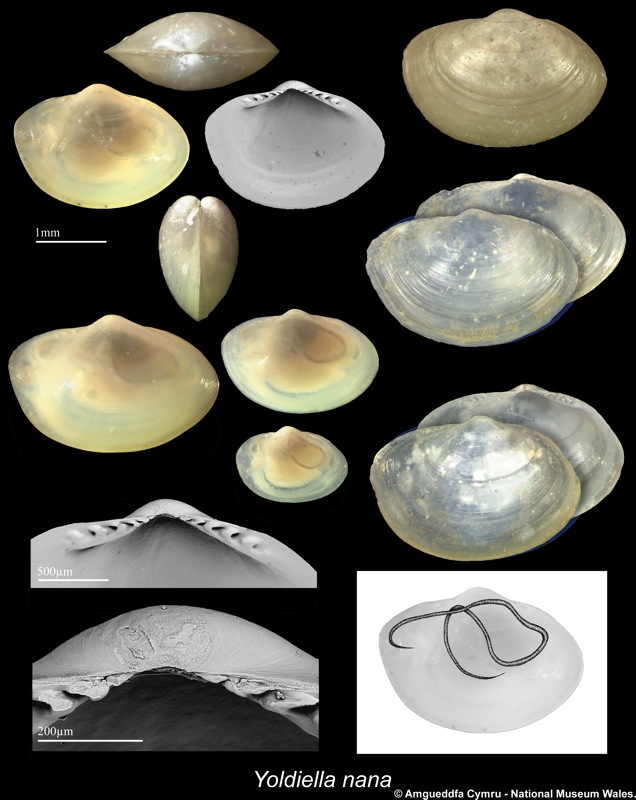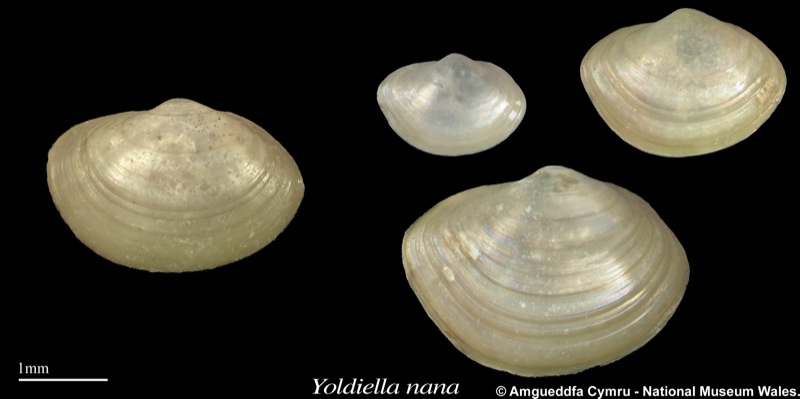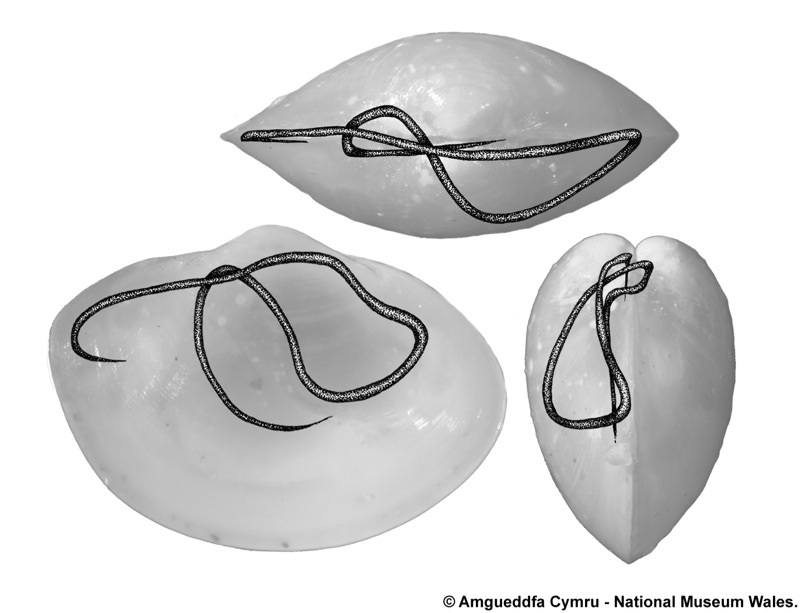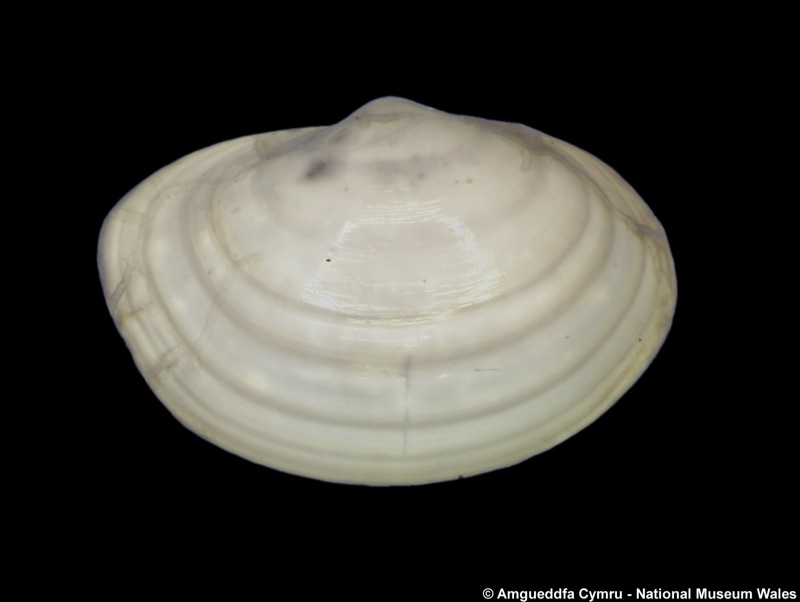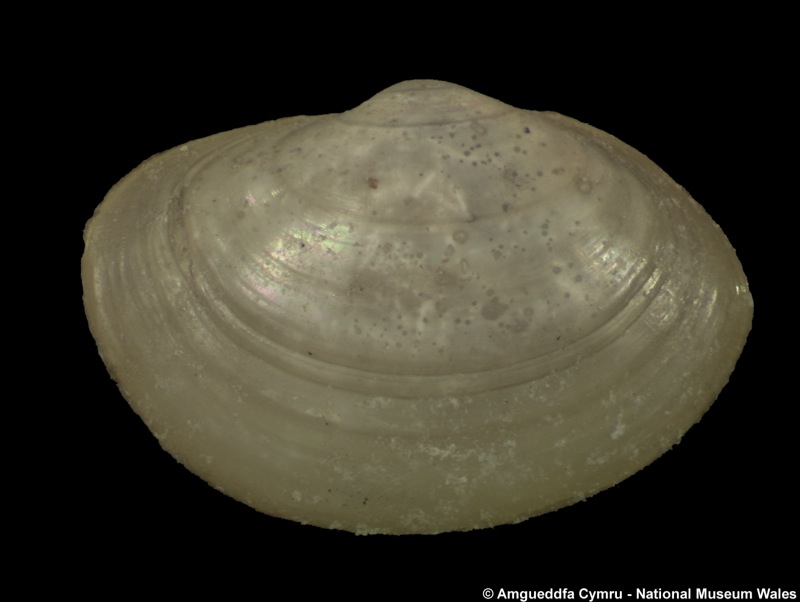Yoldiella nana (M Sars, 1865)
Nuculanoidea : Nuculanidae |
| Tebble name: | n/a |
| Smith & Heppell name: | Yoldiella nana M Sars, 1865 |
Notes on Nomenclature
Killeen & Turner (2009) use Nuculanidae instead of Yoldiidae in agreement with Ockelmann & Warén (1998) who explan that the distinguishing characters between these two families has never been well documented. Until the Yoldiidae can be clearly distinguished from the Nuculanidae we shall treat them under the single family Nuculanidae.
To size: To 3mm. Shell Structure: Thin, but not fragile. Equivalve: Equivalve. Equilateral: Equilateral. Tumidity: Moderately tumid. Outline: Ovate: antero- and postero-dorsal margins short, almost horizontal and slightly convex; anterior margin narrowly rounded, upper part very slightly obliquely truncated; lower posterior margin obliquely truncated; ventral margin shallowly rounded. Umbo central, moderately broad, prominent, projecting above the dorsal margin.
Sculpture: Virtually smooth with only very faint, closely spaced concentric lines and growth rings in larger specimens. Margin: Smooth. Ligament: Amphidetic, attached internally to the underside of the beak without a projecting chondrophore or resilifer. Moderately short and thin. Hinge: Taxodont: Hinge plate moderately broad (broadening rapidly away from the ligament) with 5-6 blunt, chevron-shaped teeth on either side of the umbo. Periostracum: Silky to slightly glossy, straw-coloured. Colour: Translucent white. Additional Characters: The hind-gut forms a simple, rounded loop on the right side of the body.
.
Distribution & Ecology
Found over a large area of the North Atlantic from Martha’s Vineyard in the west, to Lofoten, northern Iceland and the entire Norwegian coast in the east and south to include the Mediterranean. Around the Faroes at depths from 170-1200m (Sneli et al. 2005). Also recorded from the Laptev Sea, Siberia in depths of 96-670m.
Depth Range
Continental Shelf (to 200m)
Continental Margin Zone (200 - 500m)
Bathyal (500 - 2000m)
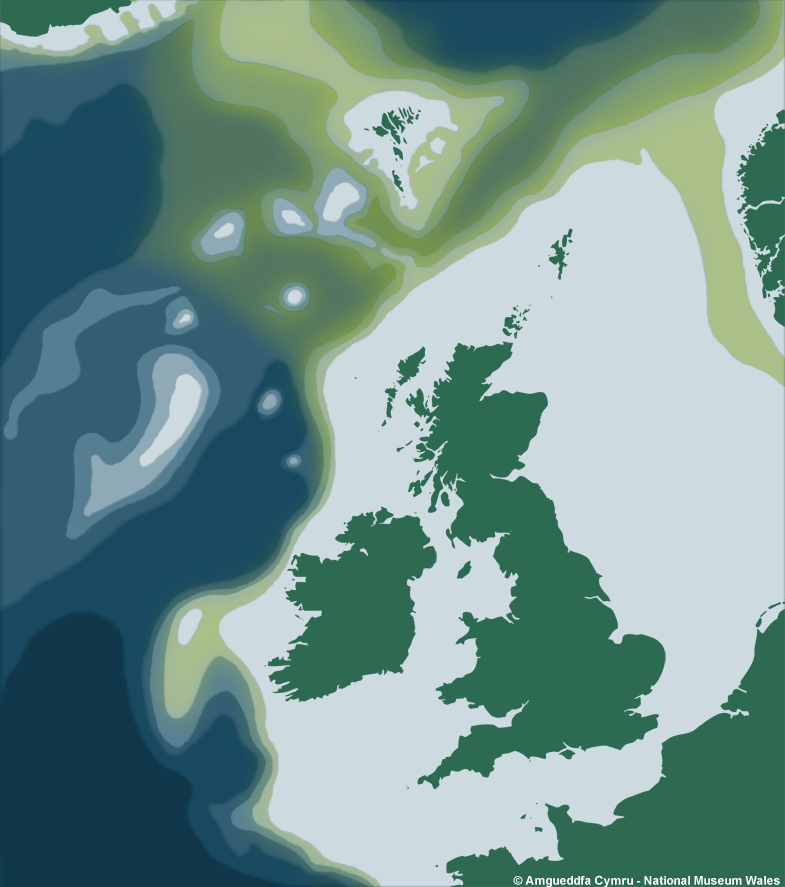
Additional Information & Related Species
Additional Comments
Yoldiella nana form A is much more tumid than the typical form of Y. nana, and the shell is slightly more solid. The umbo is broader and more prominent in relation to the size of the shell. This form is also more angular at the postero-dorsal and antero-dorsal regions. The ventral margin is shallowly rounded as found in the typical Y. nana.
Yoldiella nana form B is also more tumid than the typical form of Y. nana, and the shell is slightly more solid. The umbo is broader and more prominent in relation to the size of the shell. The postero-dorsal and antero-dorsal regions more closely resemble that of typical Y. nana, but the ventral margin is much more strongly rounded and is more similar to ventral margin found in Y. solidula.
Related Species
Nuculanoidea : Nuculanidae
References
Listed are literature citing Yoldiella nana (M Sars, 1865). Reference containing the species Type Description is highlighted.
|
Sars M 1865. Malacozoologiske lagttagelser. Forhandlinger i Videnskabsselskabet i Kristiania. 1864: 283-315. |
Resources
- Conchological Society
of Great Britain & Ireland
Provides resources for understanding, identifying, recording, and conserving molluscs - CLEMAM
Check List of European Marine Mollusca - MarLIN
The Marine Life Information Network for Britain and Ireland (MarLIN) provides information for marine environmental management, protection and education. It is a centre of excellence in spatially based and time-series marine biological information and supports good stewardship in the marine environment. - NBN Gateway
National Biodiversity Network's Gateway. Use it to explore UK biodiversity data, as contributed by participating data providers. - BivAToL
- MarBEF
- Malacological Society
- Unitas Malacologica
- Census of Marine Life
- MarBEF
MarBEF, a network of excellence funded by the European Union and consisting of 94 European marine institutes, is a platform to integrate and disseminate knowledge and expertise on marine biodiversity, with links to researchers, industry, stakeholders and the general public.



